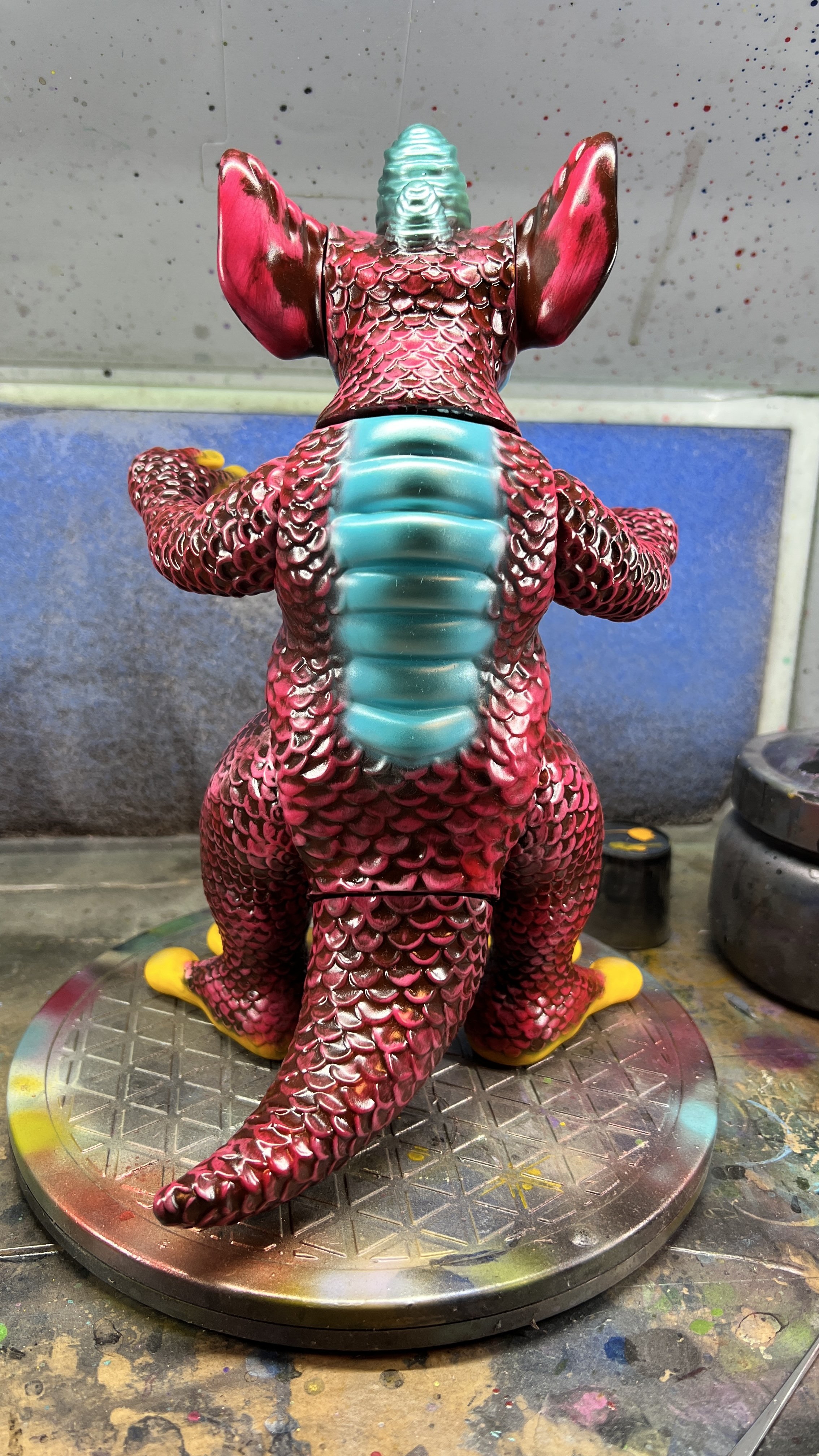Rubbing Technique
This technique stands as one of the classics in Sofubi and Vinyl Toy painting. I've incorporated it into my latest style to infuse a sense of depth, emphasizing the toy's darkness.
When employing this method, you face two choices: either leave it as is or enhance the rubbing result with additional colors. The decision hinges on the style you wish to impart to the toys. I've experimented with both options in my own creations, and each serves its stylistic purpose. Choose your favorite.
To embark on this journey, you'll need an airbrush, a cloth or similar material, and vinyl thinner.
My typical approach involves applying a base color to the blank vinyl of the toy. This base color must be darker than the toy's surface. For instance, one might use a black paint base over the white vinyl of the toy, or conversely, a white base color over black vinyl. I've also experimented with variations, such as a darker red over light red vinyl or a deeper green over light green vinyl. Regardless of the combination, the key lies in opting for a darker tone. This choice ensures that the color settles into the deeper recesses of the sculpture's details, effectively creating shadows.
Now, gather a generous amount of thinner and, with a paper or a clean cloth (I typically opt for old, pristine T-shirts), gently rub the toy's surface. The goal is to cleanse the higher points of the details while preserving the shadows created by the base color. This process involves a fair bit of trial and error. Using an excessive amount of thinner risks erasing the shadows, diminishing the intended effect. Additionally, using the same section of the cloth, as it becomes dirtier, may impart a vintage, dirtier appearance to the vinyl surface—this can be a deliberate stylistic choice that I personally enjoy incorporating into my toys.
Should you desire a more thorough cleaning of the toy's lighter areas, apply more thinner to the clean cloth and repeat the process.
Now, we arrive at the final stage of the process. As mentioned earlier, you face two distinct choices. If you opt to retain the current state—with the base paint residing in the shadows and the clean highlights of the vinyl—you'll achieve a cell-shaded effect on the toy. Conversely, should you apply a thin coat of paint over the entire surface of the toy once again, a vintage aesthetic will emerge.
Experiment with this technique on your own, but ensure you wear gloves suitable for use with thinner, as regular vinyl gloves may dissolve. Most importantly, use a mask and conduct this process in a well-ventilated room. Exercise caution, and prioritize your health—don't compromise on safety.
Hope you like this technique! Catch you later!




